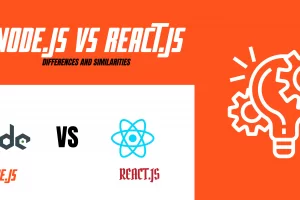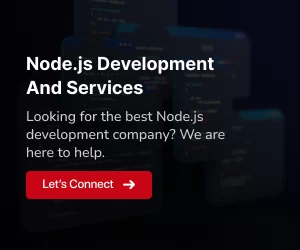Effective API Development Best Practices are the bedrock of creating reliable and efficient APIs. As the digital landscape continues to evolve, it’s crucial to adopt a strategic approach to API development to ensure seamless integration and optimal performance for both developers and end-users. In this section, we will delve deeper into the significance of adhering to these practices and the impact they can have on the development lifecycle.
Understanding and implementing Effective API Development Best Practices not only streamline the development process but also lead to well-structured, maintainable APIs that foster collaboration and innovation. Let’s explore the key aspects of these best practices and how they can elevate your API development endeavors.
Think About the Architecture
When embarking on Effective API Development Best Practices, architecture stands as a foundational consideration. The architectural design of an API sets the stage for its functionality, scalability, and long-term viability. A well-thought-out architecture aligns with the objectives of the API and ensures that it can evolve and adapt to changing requirements.
RESTful Architecture:
Representational State Transfer (REST) is a widely adopted architectural style for designing networked applications. RESTful APIs, characterized by their stateless nature and adherence to standard HTTP methods, promote simplicity, scalability, and interoperability. Following RESTful principles fosters a uniform interface and aids in creating predictable and intuitive APIs.GraphQL Architecture:
GraphQL, a newer approach gaining traction, offers a more flexible and efficient alternative to REST. It allows clients to request specific data they need, minimizing over-fetching or under-fetching of information. GraphQL’s type system and query language provide developers with fine-grained control over the data retrieved, making it a powerful option for API architecture.Microservices Architecture:
In the realm of Effective API Development Best Practices, the microservices architecture is gaining prominence. Breaking down applications into smaller, independently deployable services enhances scalability, maintainability, and development speed. Each service corresponds to a specific functionality, making it easier to manage and update, while APIs act as the glue that connects these microservices.Monolithic Architecture:
While transitioning to more modern architectural paradigms is common, traditional monolithic architecture still has its place. In this approach, the entire application is developed as a single, tightly integrated unit. While it may lack the flexibility and scalability of microservices, monolithic architecture can be simpler to develop, deploy, and manage, especially for smaller applications or projects with limited complexity.
Choosing the right architecture depends on various factors, including the project’s scope, scalability requirements, team expertise, and future growth plans. Effective API Development Best Practices dictate aligning the chosen architecture with the project’s specific needs, ensuring optimal performance and adaptability as the application evolves. By carefully considering and planning the architectural design, you set the stage for a successful API development journey.
Also Read: Express, Koa, Meteor, Sails.js: A Node.js Frameworks Comparison
Types of APIs
In the realm of Effective API Development Best Practices, understanding the different types of APIs is fundamental to making informed decisions during the development process. APIs come in various forms, each tailored to suit specific use cases and requirements. Let’s explore the most common types of APIs and their unique characteristics.
Open APIs (Public APIs):
Open APIs, also known as public APIs, are accessible to external developers and third-party applications. They are designed for external users and developers, encouraging collaboration and integration with other platforms. Open APIs often have documentation available publicly, making it easier for developers to understand and use them.Internal APIs (Private APIs):
Internal APIs, or private APIs, are restricted to internal use within an organization. They are not exposed to external developers and are intended for internal systems, applications, or teams. Internal APIs facilitate modular development within a company, allowing different teams to work on separate components while still maintaining integration and consistency.Partner APIs:
Partner APIs are shared with specific external organizations, usually strategic partners or collaborators. Access to these APIs is selectively granted, often requiring authentication and approval. Partner APIs enable a more controlled and secure integration with trusted external entities, fostering strategic partnerships and collaboration.Composite APIs:
Composite APIs allow developers to access multiple endpoints in one call. They aggregate various endpoints or services to streamline the integration process, providing a more efficient way to interact with multiple functionalities through a single API request.RESTful APIs:
Representational State Transfer (REST) APIs adhere to REST architectural principles and utilize standard HTTP methods for communication. They are widely adopted due to their simplicity, scalability, and ease of integration. RESTful APIs provide a stateless communication mechanism, making them highly efficient and suitable for a variety of applications.SOAP APIs:
Simple Object Access Protocol (SOAP) APIs use XML-based messaging protocol for communication. They have a defined and standardized structure, ensuring a high level of security and reliability. SOAP APIs are often used in enterprise-level applications and scenarios where strict standards and protocols are required.WebSocket APIs:
WebSocket APIs enable real-time, full-duplex communication between the client and server. Unlike traditional HTTP-based APIs, WebSocket APIs facilitate continuous data exchange, making them suitable for applications that require low-latency updates and real-time interactions.
Document Everything
Effective API Development Best Practices advocate for thorough and comprehensive documentation throughout the API development lifecycle. Documentation serves as a critical resource, providing essential information to developers, stakeholders, and users. A well-documented API ensures clarity, facilitates seamless integration, and encourages collaboration. Let’s delve into the various aspects of comprehensive API documentation.
API Reference Documentation:
The API reference documentation acts as the cornerstone, offering in-depth insights into the API’s endpoints, parameters, request/response formats, authentication methods, and error handling. Each endpoint should be documented with clear descriptions, supported HTTP methods, expected parameters (including data types and constraints), and sample requests and responses.Authentication and Authorization:
Provide clear and explicit documentation on authentication mechanisms, including the supported authentication types (e.g., API keys, OAuth tokens), how to obtain them, and the necessary steps to authenticate API requests. Additionally, outline the authorization process, specifying the permissions required for different API endpoints.Rate Limits and Usage Policies:
Document the rate limits, throttling policies, and usage guidelines associated with the API. Clearly define the maximum number of requests allowed within specific timeframes (e.g., per minute, per hour) and how exceeding these limits impacts API usage. Educate users on handling rate-limited scenarios and implementing backoff strategies.Error Handling and Responses:
Detail the possible error codes, error messages, and their meanings to guide developers in diagnosing and resolving issues effectively. Offer recommendations on how to handle errors gracefully and provide potential solutions for common error scenarios. A well-documented error handling approach enhances the overall user experience.Examples and Use Cases:
Include comprehensive examples and use cases to illustrate how to make API requests and interpret responses for various functionalities. Real-world examples help developers understand the API’s capabilities and facilitate quicker integration into their applications.Best Practices and Guidelines:
Incorporate best practices and coding guidelines to encourage developers to follow standardized approaches when interacting with the API. Cover topics such as data formatting, request optimization, and efficient use of API features. These guidelines contribute to optimized API usage and maintainability.Change Log and Versioning Information:
Maintain a change log to document updates, enhancements, and changes made to the API. Clearly state the versioning strategy, how users can transition between versions, and any backward-incompatible changes. Transparent versioning and change management instill confidence and trust in the API.
By documenting every aspect of the API thoroughly and thoughtfully, you empower developers to integrate the API seamlessly and utilize its full potential. Effective API Development Best Practices underscore the significance of clear, organized, and up-to-date documentation as a fundamental element of successful API development and adoption.
Test Often
Testing is a critical component of Effective API Development Best Practices. Regular and thorough testing ensures the reliability, functionality, and performance of the API throughout its development lifecycle. Testing early and often not only identifies issues promptly but also saves time and resources by addressing problems in their nascent stages. Let’s explore the key aspects of testing within API development.
Unit Testing:
Unit testing involves evaluating individual units or components of the API in isolation. Developers write unit tests to verify the correctness of functions, methods, or procedures. These tests help catch bugs early, promote code modularity, and facilitate refactoring while maintaining the desired functionality.Integration Testing:
Integration testing assesses the interaction and integration between various components of the API. It ensures that different parts of the API work together seamlessly and produce the expected outcomes. Integration tests often involve testing APIs in combinations, databases, and external services to validate their interoperability.Functional Testing:
Functional testing evaluates the overall functionality of the API by testing its endpoints and verifying that they meet the specified requirements. Test cases are designed to cover a range of inputs and scenarios to ensure the API behaves as intended and delivers the correct responses for different use cases.Load Testing:
Load testing simulates real-world usage scenarios by subjecting the API to a predefined load, often mimicking expected user traffic. This type of testing helps identify performance bottlenecks, assess the API’s scalability, and determine how it behaves under various levels of stress.Security Testing:
Security testing involves assessing the API’s security measures to identify vulnerabilities and ensure the protection of sensitive data. It includes checks for authentication mechanisms, authorization policies, data encryption, and protection against common security threats such as injection attacks, cross-site scripting (XSS), and more.Automated Testing:
Automated testing involves creating and executing tests automatically using testing frameworks or tools. Automated tests are valuable for repetitive tasks, regression testing, and ensuring consistent behavior across different environments. They contribute to faster development cycles and increased confidence in the API’s stability.Manual Testing:
While automated testing is efficient, manual testing is equally important. Manual tests, executed by QA engineers or developers, involve exploring the API’s functionalities, identifying user experience issues, and validating the accuracy of responses. Manual testing provides a more human-centric approach to quality assurance.
Testing often and at various levels of the API development process is essential for delivering a reliable and robust API. Effective API Development Best Practices highlight the significance of a comprehensive and balanced testing strategy, aiming for a thoroughly validated API that meets the highest quality standards.
Also Read: How to Become a Backend Developer: Skills Required, Roadmap
Creating Effective and Descriptive Codes
Writing effective and descriptive code is a cornerstone of Effective API Development Best Practices. Well-structured, readable, and well-commented code not only enhances collaboration but also ensures maintainability and extensibility. Let’s explore key strategies to create effective and descriptive code within API development.
Meaningful Variable and Function Names:
Choose descriptive names for variables, functions, and classes that clearly indicate their purpose and functionality. Avoid generic names liketemp,data, orvalue. Use meaningful nouns or verbs that accurately represent the data or actions they encapsulate.Consistent Code Formatting:
Maintain a consistent code formatting style throughout your project. Consistency improves readability and makes the codebase look organized and cohesive. Follow established coding conventions for the programming language you are using.Use Comments Wisely:
Add comments to clarify complex logic, algorithms, or non-intuitive parts of the code. Comments should explain the ‘why’ behind the code, focusing on the rationale or business logic. Avoid redundant or unnecessary comments that merely restate what the code does.Modularize Code:
Break down your code into smaller, manageable modules, functions, or classes, each responsible for a specific task. Modular code is easier to understand, test, and maintain. Aim for a single responsibility principle where each component does one thing and does it well.Error Handling:
Implement robust error handling to gracefully manage unexpected scenarios. Clearly communicate errors through meaningful error messages or exceptions, aiding in troubleshooting and debugging.Optimize Code for Readability:
Prioritize readability over cleverness or brevity. Write code that is easy to read, even for someone unfamiliar with the project. Use consistent indentation, appropriate whitespace, and avoid overly complex one-liners.Version Control and Documentation:
Leverage version control systems like Git to track changes and maintain a clear history of code updates. Pair your code with comprehensive documentation that explains the structure, purpose, and usage of the codebase.
Effective API Development Best Practices emphasize creating code that is not only functional but also understandable, maintainable, and conducive to collaboration. By following these guidelines, you can craft code that stands the test of time and contributes to a successful API development journey.
Utilizing an API Gateway
In the realm of Effective API Development Best Practices, leveraging an API Gateway stands out as a strategic approach to streamline and manage APIs efficiently. An API Gateway acts as a centralized entry point for multiple APIs, providing various benefits related to security, scalability, and overall API management. Let’s delve into the advantages and best practices of utilizing an API Gateway in your API development journey.
Centralized Entry Point:
An API Gateway serves as a single, unified entry point for clients to access multiple APIs. This centralized approach simplifies client interaction by allowing them to communicate with a single domain, streamlining API consumption and reducing complexity.Request Routing and Composition:
API Gateways offer request routing capabilities, allowing you to route incoming requests to the appropriate backend services based on predefined rules. Additionally, an API Gateway can aggregate multiple requests into a single request to optimize communication between clients and the backend.Security and Authentication:
API Gateways play a crucial role in enforcing security measures. They often provide features like authentication, authorization, and access control. By centralizing security measures, you can ensure consistent and secure access to your APIs.Rate Limiting and Throttling:
Implement rate limiting and throttling policies at the API Gateway level to manage and control the rate of incoming requests. This helps protect your backend services from being overwhelmed and ensures fair usage of the API.Request and Response Transformation:
API Gateways can handle request and response transformations, allowing you to modify the request or response format, structure, or headers as needed. This capability is vital for ensuring that clients receive data in a format that suits their requirements.Caching:
Utilize caching mechanisms in the API Gateway to store frequently accessed data temporarily. Caching helps improve response times and reduce the load on backend services, enhancing the overall performance of your API.
Using an API Gateway aligns with Effective API Development Best Practices, providing a centralized, efficient, and secure approach to manage APIs. By implementing an API Gateway in your architecture, you enhance the overall development process, ensuring scalability, security, and streamlined access to your APIs.
Conclusion:
Mastering Effective API Development Best Practices is critical in the ever-evolving landscape of software creation. It encompasses understanding the diverse API types available and making informed choices regarding API architecture, such as opting for RESTful or GraphQL approaches. Comprehensive documentation that covers endpoints and usage guidelines, coupled with rigorous testing, including unit, integration, functional, and security testing, ensures the robustness and reliability of the API. Writing code that is both effective and descriptive, emphasizing modularization and efficient error handling, contributes to building APIs that are not only functional but also maintainable and easily understandable. Additionally, integrating an API Gateway streamlines the process by offering a centralized entry point, enhanced security measures, and efficient request routing, aligning seamlessly with Effective API Development Best Practices. Adhering to these practices guarantees the creation of APIs that meet user expectations, streamline integration, and enable seamless communication between various software systems.
Effective API Development Best Practices underscore the essence of optimal API design, aiding in the development of resilient and scalable applications. Understanding the varied API types and selecting appropriate architecture, like RESTful or GraphQL, sets a solid foundation. Thorough documentation encompassing endpoints and usage guidelines, alongside rigorous testing across different levels, ensures the dependability and functionality of the API. Crafting code that is both efficient and well-structured, focusing on modularity and robust error handling, results in APIs that are not only effective but also easy to comprehend and maintain. Furthermore, integrating an API Gateway offers centralized access, elevated security, and streamlined request routing, seamlessly aligning with the principles of Effective API Development Best Practices. By embracing these practices, developers can achieve the creation of APIs that not only cater to user expectations but also facilitate smooth integration and communication across diverse software systems.















